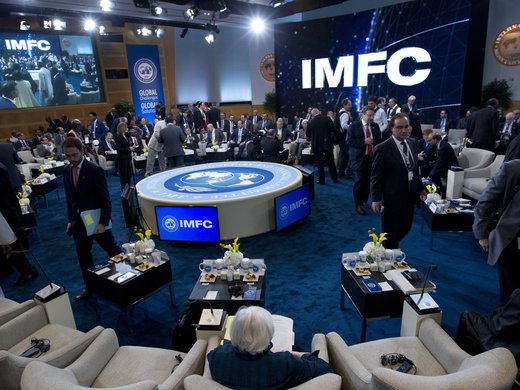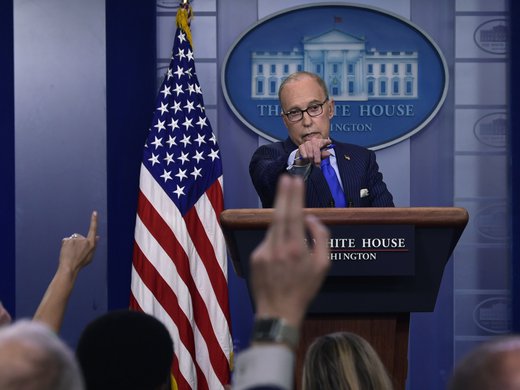In January 2015, indicators suggested that Canada’s economy was in good shape. But the horizon was dark because oil prices had collapsed. The central bank ignored the data and cut interest rates.
Fast forward to July 2018. Indicators suggest that Canada’s economy is in good shape. But the horizon is dark because US President Donald Trump has started what some are calling a global trade war. The central bank embraced the data and raised interest rates.
Why respond to one economic threat and not the other?
Most saw the increase coming. Prices of financial assets linked to short-term interest rates put the odds of a hike at about 90 percent ahead of the announcement. The Bank of Canada had been saying for a year that it intended to raise borrowing costs gradually, but it hadn’t adjusted the policy rate in six months. Poloz and his lieutenants had been clear in the weeks before the decision that they thought Canada’s economy was doing well.
Still, the minority that thought the Bank of Canada should leave interest rates unchanged appeared to have a strong case. Stéfane Marion, chief economist at National Bank, Canada’s sixth-biggest lender, was critical of Poloz in 2017; he said the central bank should have resumed raising interest rates sooner than it did. But ahead of the July decision, Marion was urging Poloz to wait. His reason? Trump.
“I think this is one of the rare instances where you could argue that given this uncertainty out there, why would you proceed with a rate hike if things turn from bad to worse later this summer?” Marion, a member of the C. D. Howe Institute’s Monetary Policy Council, said in an interview with BNN Bloomberg on July 4.
Marion and those who agreed with him were outliers, but Poloz felt compelled to address their concern directly. The interest rate decision was accompanied by the release of the central bank’s latest quarterly report on the economy. The publication of the Monetary Policy Report is always followed by a press conference, at which the governor or senior deputy governor gives opening remarks that add context and address misconceptions. Poloz used his statement to send a message to those who think the Bank of Canada should be getting ready for a trade war.
“There was speculation that the Bank would not move interest rates today because of the possibility of further trade measures,” he said. “The Bank cannot make policy on the basis of hypothetical scenarios. We felt it appropriate to set aside this risk and make policy on the basis of what has been announced. Given the multiple channels through which protectionist measures affect economies, it should be clear that monetary policy is ill-suited to counteract all of their effects.”
Since the policy change was so widely anticipated, the news on July 11 became the Bank of Canada’s surprisingly sanguine outlook for exports and investment. Poloz acknowledged that trade was the dominant subject of their latest deliberations, and the central bank said that US duties on aluminum and steel, along with Canada’s tit-for-tat response, would weigh on economic growth.
But that drag won’t be debilitating. The Bank of Canada actually raised its forecast for exports and business investment, as readings on both so far this year have been stronger than anticipated. Higher oil prices are offsetting the overall effect of the duties, while stronger-than-expected economic growth in the US is encouraging companies to expand so they can keep up with orders.
That’s why 2018 is different than 2015. Poloz told me in the interview that the central bank had solid information about what the collapse of oil prices would do to the economy. Companies had told the central bank they would dramatically cut investment, and they did. The Bank of Canada had seen commodity busts before, and its models were well tuned to predict what would happen when oil prices plunged below $30 per barrel.
A total trade war would be devastating for Canada. But there are too many scenarios that could unfold for the central bank to anticipate how it should respond without more concrete information. Each company will react differently. Demand is such that most Canadian aluminum and steel producers could decide to push through the price barriers and continue selling. That’s what lumber companies have done, even though they have faced punitive US duties for more than a year.
It’s also possible the central bank could decide to speed up interest rate increases if prices rise as the result of border taxes and a weaker currency, which likely would be a by-product of weaker growth.
“Let me emphasize that monetary policy by itself could not undo the long-term damage to jobs and income that could result from rising protectionism,” Poloz said.
So, in a way, by increasing interest rates this week, the Bank of Canada governor was sending a message to politicians: the central banks resolved the last global economic crisis, but don’t expect them to fix this one.




